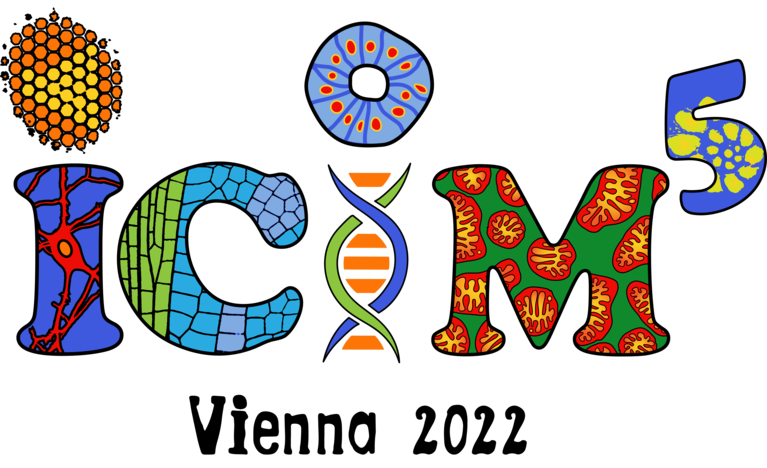Patricia Álvarez-Campos
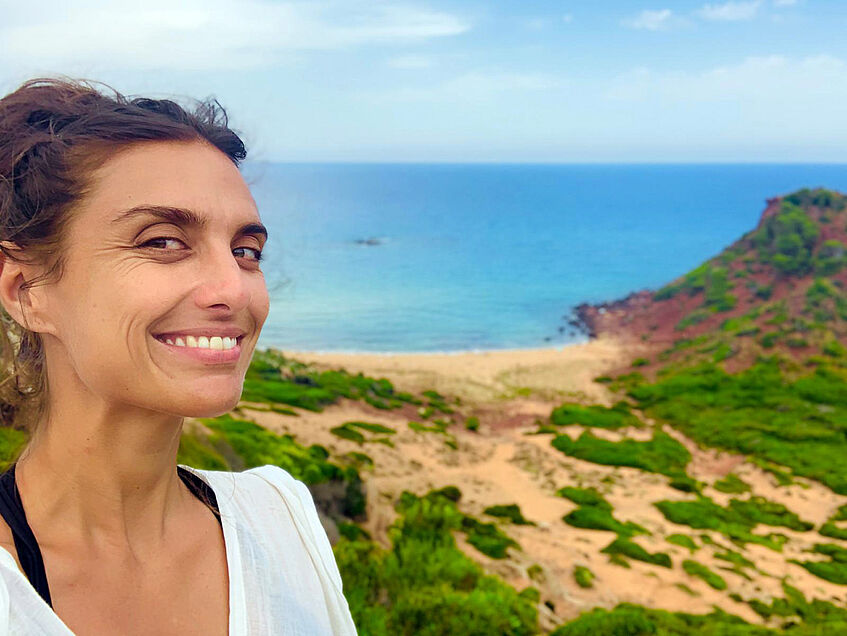
Patricia Álvarez-Campos
Biology Department,
Universidad Autónoma de Madrid, Spain
Patricia Álvarez-Campos earned a Ph.D. from Universidad Autónoma de Madrid (UAM), Spain, in 2016 for her work in patterns of speciation and gene expression of the marine annelid family Syllidae. As a postdoctoral researcher, she then became interested in the EvoDevo field, and she started to study cellular and molecular aspects of annelid regeneration, specifically in the species Platynereis dumerilii, at Institut Jacques Monod (CNRS, París). After getting a postdoctoral fellowship in 2018, she moved to UK to work on single-cell transcriptomics techniques at Oxford Brookes University. There she was mainly focused on the species Pristina leidyi, a small freshwater annelid and a promising model for development, regeneration, and stem cell research. Shortly later, at the end of 2019, she got an Assistant Professor position back in Madrid, at UAM, where she has been working since then. Her research is mainly focused on the biodiversity, systematics and evolution of Syllidae worms, as well as on several aspects of development, such as the hormonal control and gene regulation of reproduction and regeneration in different annelid species. Patri and her team combine different methods in their research that range from traditional laboratory experiments including observations of the organism’s development and behavior as well as morphological studies using light and electron microscopy. The work also includes molecular phylogenetic analyses and other state-of-the art techniques such as differential gene expression analyses and single-cell transcriptomics.
More on Patri Álvarez-Campos' work can be found here.
Oliver Betz
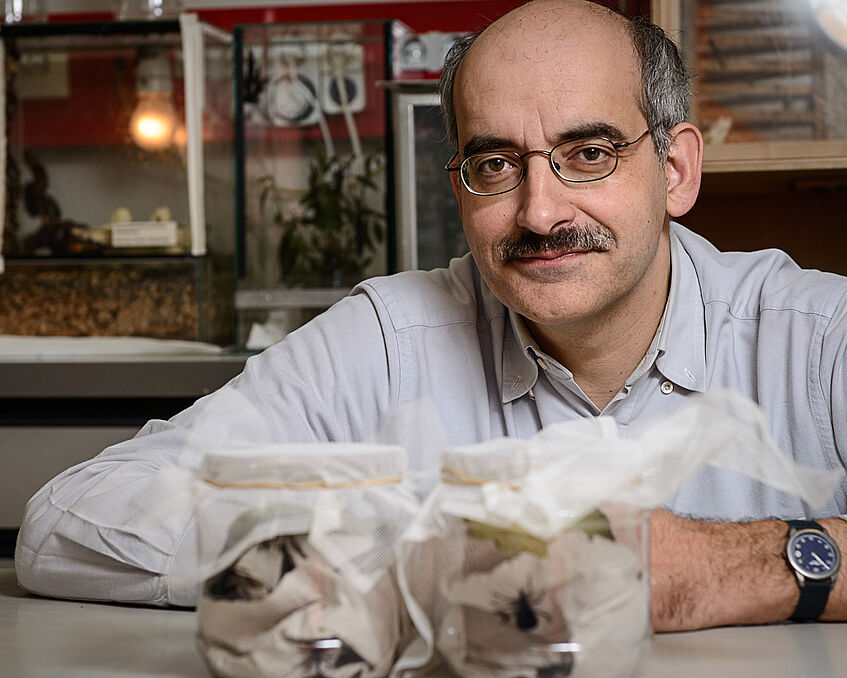
Oliver Betz
Institute of Evolution and Ecology, University of Tübingen, Germany
Oliver Betz gained a Ph.D. from the University of Bayreuth, Germany, in 1994 for his work on the morphology, function, and evolution of the prey-capture apparatus in Stenus rove beetles. He then became interested in the broader fields of functional and ecological morphology and qualified in 2002 as a professor in ecology and zoology at the University of Kiel, Germany. From 1999-2001, he worked as a research scholar at the Field Museum of Natural History, Chicago, USA, where he performed collection-based research on the relationship between the morphology, ecology, and evolution of the mouthparts of fungal- spore-feeding staphylonoid beetles. Since 2004, Oliver has been a full professor of Evolutionary Biology of Invertebrates at the Biology Department at the University of Tübingen, Baden-Württemberg, Germany. His research focuses on the functional and ecological morphology of insects, taking into account the integration of morphology and ecology to improve the understanding of the function of morphological structures in their ecological (environment) and evolutionary (history) context. Through his participation in interdisciplinary research projects (e.g., the collaborative research council "Biological design and integrative structures - analysis, simulation and implementation in architecture" (https://www.trr141.de/)), his team has also been involved in biomimetic projects on insect attachment systems and joint-free movement principles. Methodologically, his group uses light and (scanning and transmission) electron mircoscopy, synchrotron microtomography and synchrotron-based X-ray cineradiography, 3D reconstruction, force measurements with force transducers and nanotribometers, highspeed videography in the context of kinematic analyses, behavioral observations, phylogenetic systematics, and ecological field and laboratory experiments.
More on Oliver Betz' work can be found here.
Georg Brenneis

Georg Brenneis
Zoological Institute and Museum, Cytology and Evolutionary Biology, University of Greifswald, Germany
Georg Brenneis acquired a Ph.D. from Humboldt University Berlin, Germany, in 2013. His research aims to reveal novel insight into the neuroanatomy and nervous system development in Arthropoda, as well as into the presence and extent of life-long neurogenesis and reparative regeneration in this hyperdiverse metazoan lineage. Predominantly, he focuses on understudied groups to gain a better understanding of neuroarchitectural and neurodevelopmental commonalities and differences across lineages and elucidate evolutionary transformations. Foremost among his taxa of interest are the bizarre marine Pycnogonida (sea spiders), which he already started to study as undergraduate student and continued to work on during his Ph.D. project at Humboldt University Berlin and Queen Mary University of London and as postdoctoral researcher at Wellesley College, MA, and Greifswald University. As sister group of all other extant chelicerates (spiders, scorpions and kin), pycnogonids can inform nervous system evolution at the stem of the chelicerate lineage and – beyond that – contribute important data points to the reconstruction of neuroanatomical and developmental traits of the last common ancestor of Arthropoda. In his studies, Georg synergistically combines various methods (in-vivo cell proliferation marker assays, fluorescent backfills, gene expression studies, immunohistochemistry, histology, µCT, SEM, 3D reconstruction) and always enjoys to test and establish new techniques toward an increased information yield from “non-model” organisms.
More on Georg Brenneis' work can be found here.
Xiaoya Ma
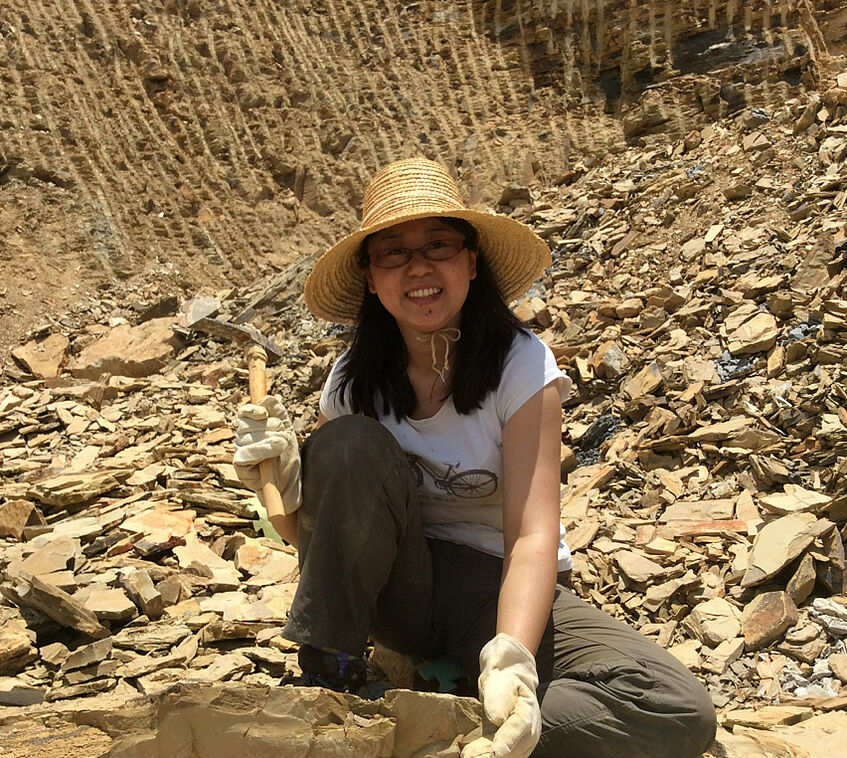
Xiaoya Ma
University of Exeter, UK
University of Yunnan, China
Xiaoya Ma studies the origin and early evolution of animal life, especially during the major transitions in evolutionary history. Xiaoya obtained a BSc in Biology (2003) and an MSc in Zoology (2005) from Yunnan University, China. She then went to the University of Leicester in the UK and earned her PhD in palaeontology (2009). After that, Xiaoya worked at the Natural History Museum in London as a postdoctoral research fellow until 2018. Xiaoya is now a senior lecturer in evolutionary biology at the University of Exeter, UK and a professor in palaeobiology at Yunnan University, China. Xiaoya’s research work has been primarily focused on the ‘Cambrian Explosion’ when all major animal groups suddenly appeared in the fossil record during a critical transition from the late Ediacaran to the early Cambrian periods (around 541 million years ago). Xiaoya has been dedicated to working on the exceptionally well-preserved Cambrian Chengjiang Biota from Yunnan Province, Southwest China. Her research interests include: 1) exploring the biodiversity of exceptionally preserved Cambrian fossil assemblages and investigating the phylogenetic relationships among Cambrian animals and their bearing on the origin and early evolution of modern taxa; 2) unravelling exceptionally preserved anatomical structures of Cambrian animals, such as nervous systems, visual systems and cardiovascular systems; 3) investigating exceptional preservation pathways of these labile structures and taphonomic biases on these early Cambrian fossils; 4) elucidating modes of life and symbiotic relationships of the Cambrian animals; 5) reconstructing the living and depositional environments of the Chengjiang biota and integrating the role of palaeoenvironmental changes in the evolution of complex life.
Rich Mooi
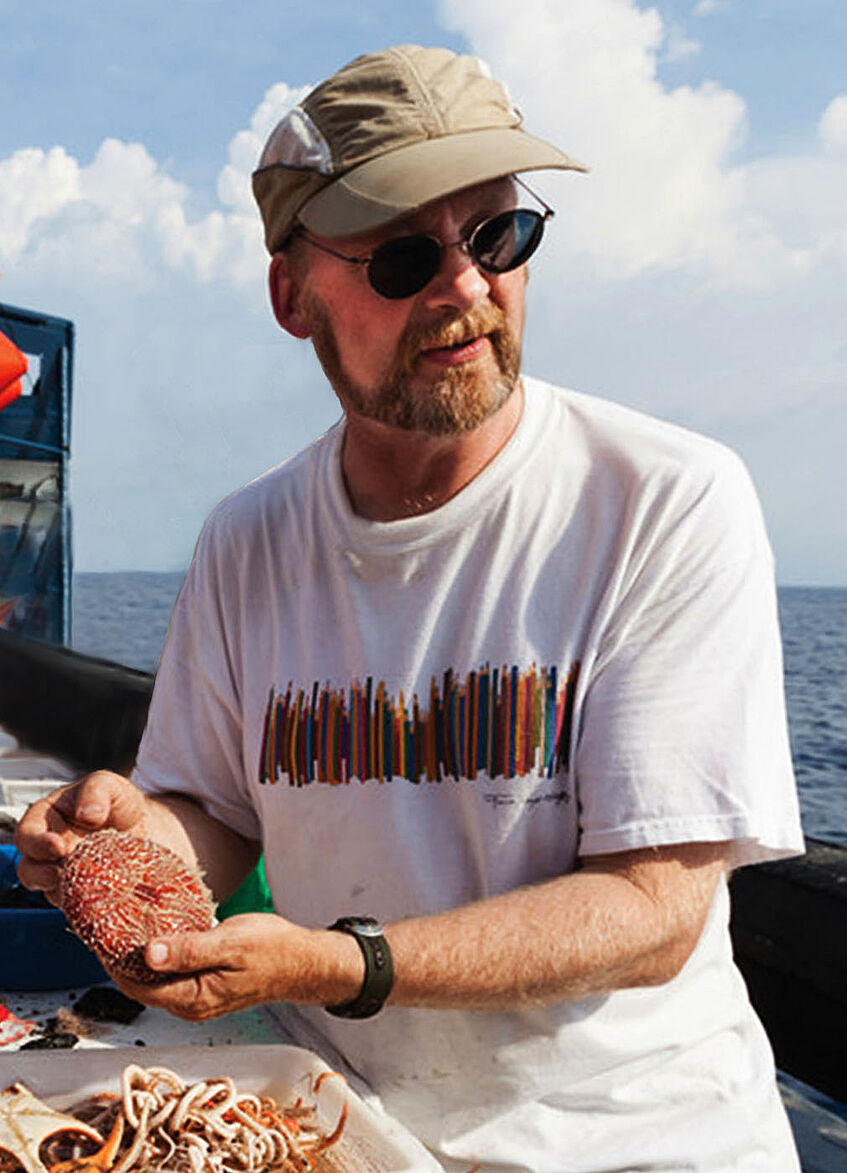
Rich Mooi
California Academy of Sciences, San Francisco, USA
Rich Mooi studies the origin and evolution of echinoderms—a group that includes sea urchins and starfish. Rich acquired B.Sc. (1981), M.Sc. (1983), and Ph.D. (1987) degrees from the University of Toronto, then spent 2 years as a Postdoctoral Fellow at the Smithsonian Institution, after which he joined the research staff at the California Academy of Sciences (1990). His research can be summarized as the study of the origins of evolutionary novelty, for which the Echinodermata constitutes an excellent model system. Rich studies the systematics, phylogeny, paleontology, and biogeography of echinoderms, particularly sea urchins and sand dollars. He has published on origins of radial symmetry in ancient echinoderms, sea urchin diversity, sources of deep-sea faunas, and how creatures as bizarre as echinoderms evolved from worm-like forms half a billion years ago. His field work has included submersible dives off the Bahamas, paleontology in Alaska, and shallow- and deep-water expeditions in Antarctica, Palau, Zanzibar, Easter Island, and particularly in the Philippines. Rich strongly believes in public dissemination of findings in biodiversity science and sustainability. To this end, he administered the Academy's undergraduate research and biological illustration internships for over 20 years, and helped create content, scripts, and illustrations for unique online biodiversity videos using the Khan Academy platform.
Rich is an Associate Editor for the Journal of Paleontology.
More on Rich Mooi ’s work can be found here.
Pavel Tomancak

Pavel Tomancak
Max Planck Institute of Molecular Cell Biology and Genetics (MPI-CBG), Dresden, Germany
Pavel Tomancak studied Molecular Biology and Genetics at the Masaryk University in Brno, Czech Republic. He then did his PhD at the European Molecular Biology Laboratory in the field of Drosophila developmental genetics. During his post-doctoral time at the University of California in Berkeley at the laboratory of Gerald M. Rubin, he established image-based genome scale resources for patterns of gene expression in Drosophila embryos. Since 2005 he leads an independent research group at the Max Planck Institute of Molecular Cell Biology and Genetics (MPI-CBG) in Dresden where he became senior research group leader in 2013. His laboratory continues to study patterns of gene expression during development by combining molecular, imaging and image analysis techniques. The group has lead a significant technological development aiming towards more complete quantitative description of gene expression patterns using light sheet microscopy. The emphasis on open access resulted in establishment of major resources such as OpenSPIM (openspim.org) and Fiji (fiji.sc). The Tomancak lab is expanding the systematic analysis of gene expression patterns to other Drosophila tissues and employing the comparative approach in other Drosophilids and invertebrate species.
More on Pavel Tomancak's work can be found here.
Christina Zakas

Christina Zakas
North Carolina State University,
Raleigh, USA
Phenotypic evolution in animals is constrained by the mechanics of early development. Macroevolutionary changes are initially shaped by developmental constraints, where simple trade-offs can ultimately result in a vast spectrum of physiological, morphological, and ecological differences. How do these major transitions in development mode occur and what are their evolutionary consequences? I research the mechanisms that allow for drastic shifts in development and the evolutionary factors responsible for determining life-history strategy.
A major goal of my research is characterizing the extent and distribution of genetic variation that contributes to early development. I have established the marine polychaete model Streblospio benedicti as a genetically tractable species to dissect the transition from indirect to direct development. In my work I integrate aspects of population genetics, quantitative genetics, and developmental biology within a single species to identify how genomic variation influences life-history. By investigating trade-offs within a species, I address major evolutionary questions: I investigate how population divergence can occur with geneflow, and how population and developmental genetics interact to shape major evolutionary transitions.
S. benedicti provides a unique opportunity to use forward genetics to experimentally dissect a major transition in animal development. The particularly intriguing feature of this system is that it can produce two divergent offspring types; females produce either hundreds of small feeding larvae with a long development time, or tens of large non-feeding larvae that develop quickly. The two distinct offspring types differ in egg size, ontogeny, and larval ecology. Using quantitative genetic approaches in this system I investigate the fundamental role of maternal genetic effects in shaping evolutionary transitions in development.
More on Christina Zakas’ work can be found here.
